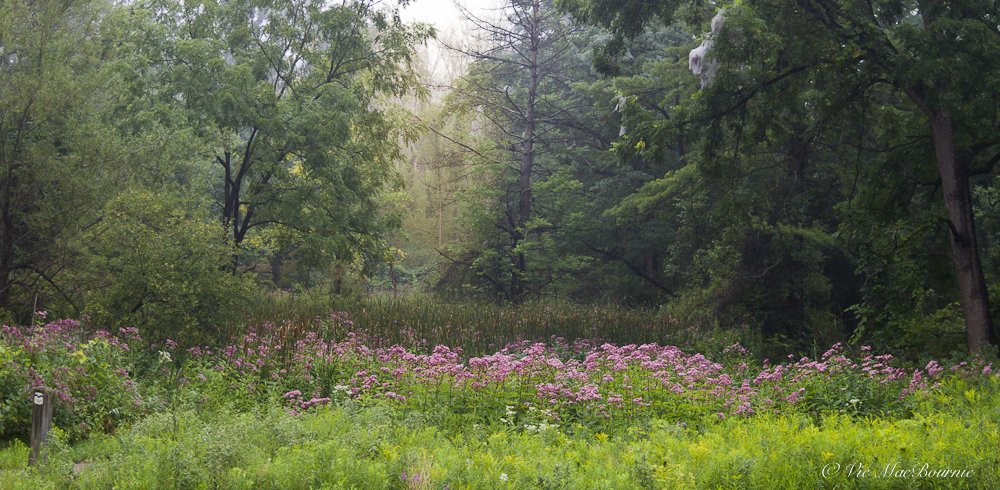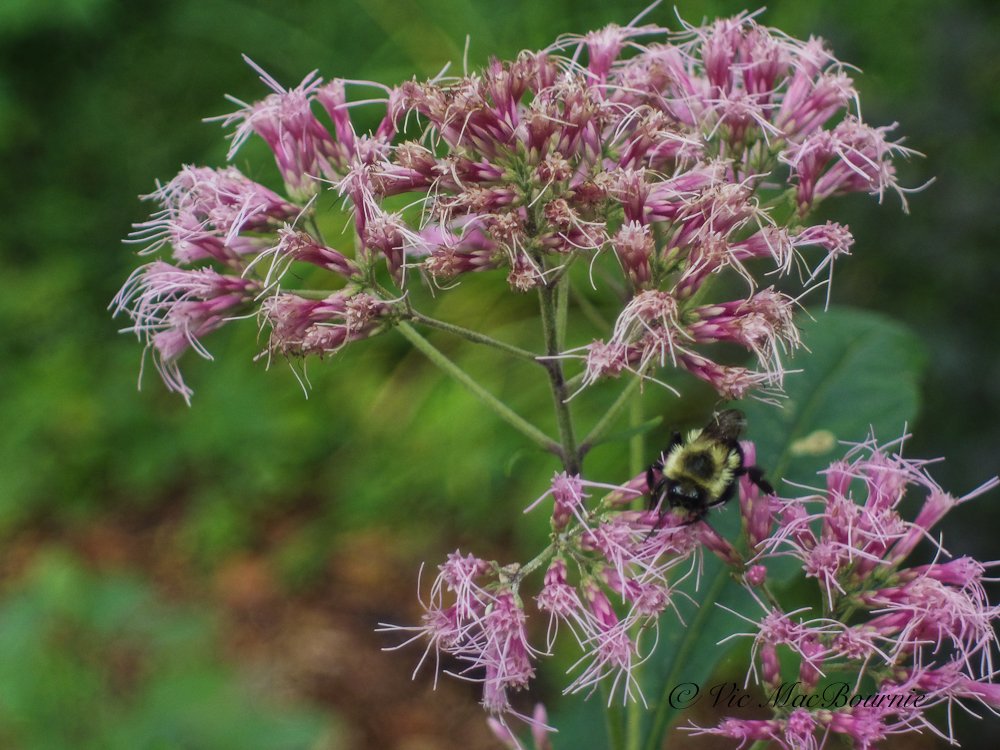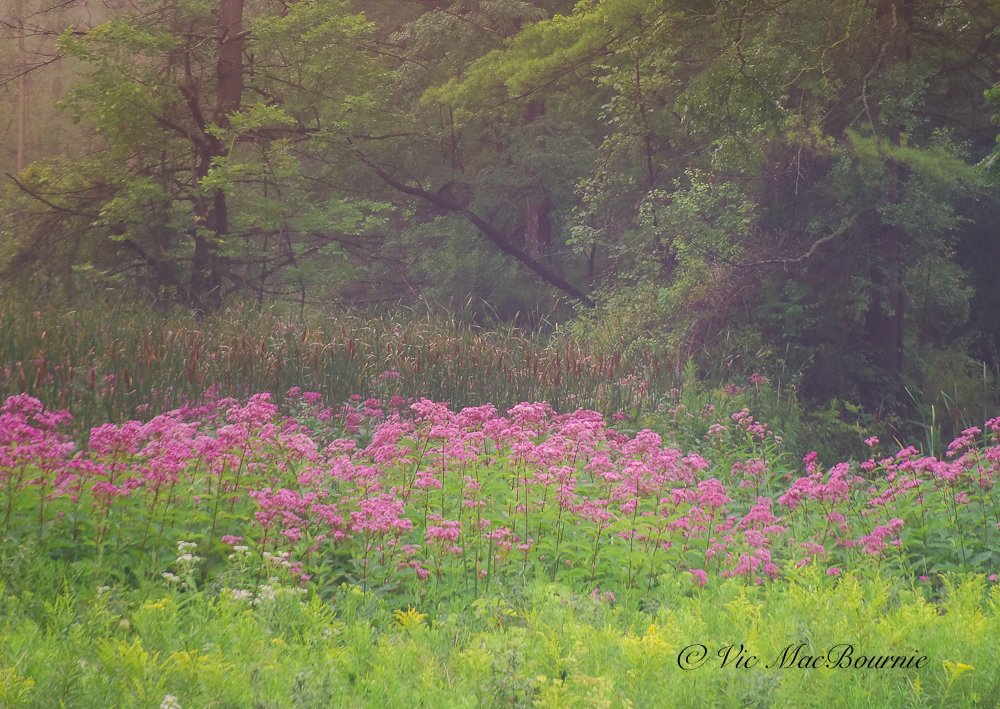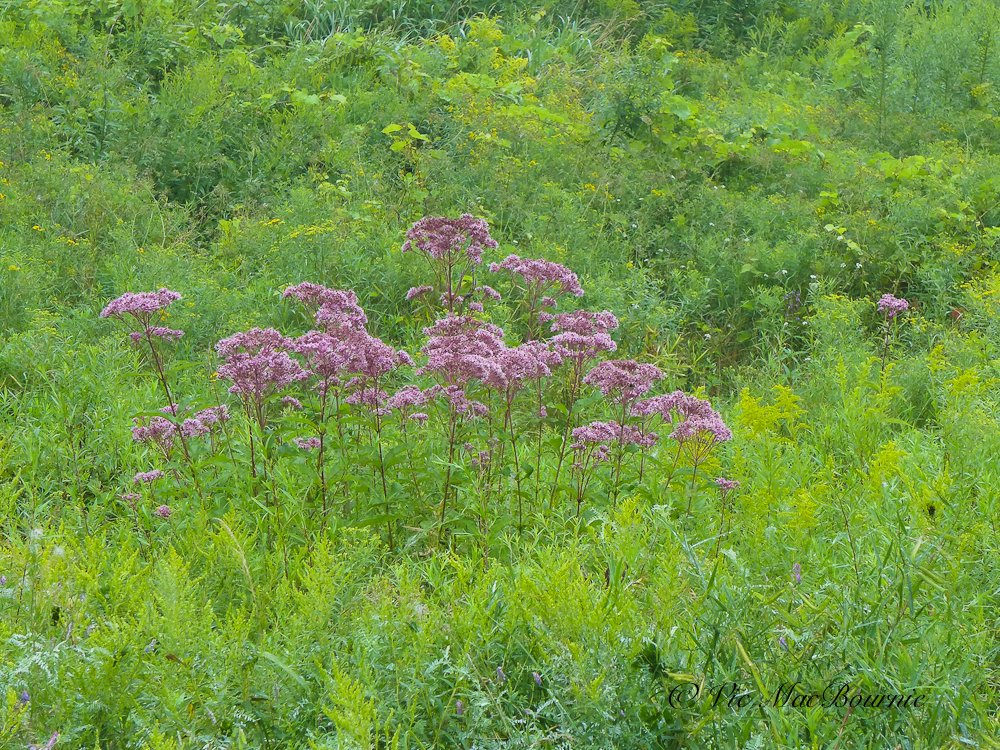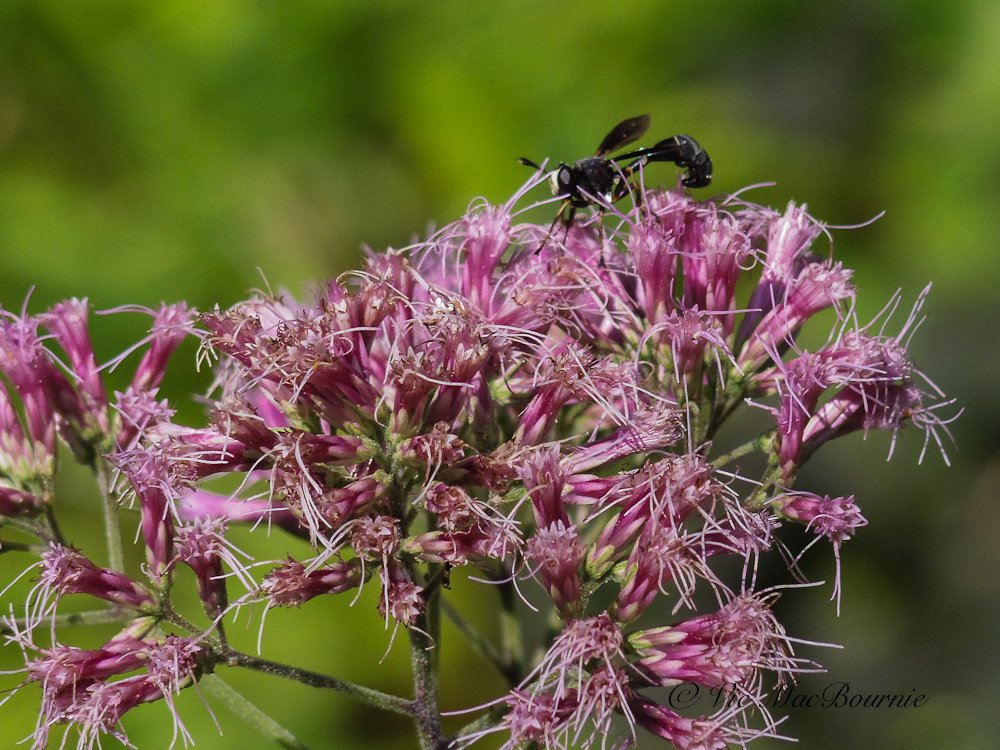Joe Pye Weed: Pollinator magnet that’s perfect for wet areas
How to grow and care for Sweet Joe Pye Weed
Sweet Joe Pye Weed (Eutrochium Purpureum) is a stunning perennial plant that not only adds beauty to your garden but also draws in a host of pollinators and butterflies including swallowtails and monarchs.
In our backyard, I have it growing toward the back of the property at the foot of a small hill and mini meadow where its impressive size and pink blooms combine nicely with the other late-blooming native plants like asters, goldenrod and wild sunflowers. It is native to eastern United States and Canada and is hardy in zones 4-8.
Joe Pye Weed (Eutrochium Purpureum) is shown here growing in a drift in a natural woodland area.
Joe Pye Weed is both deer and rabbit resistant. The plants also tolerates both clay soil and road salt spray, making them ideal plants to use as a screen if you need privacy near a roadway.
Consider growing Joe Pye Weed as a native alternative to the non-native and invasive butterfly bush. Joe Pye Weed is host to a number of butterflies and moths including the Ruby Tiger moth.
Can I grow different Joe Pye Weed plants?
There are actually several different Joe Pye Weeds you could grow in your garden including the tallest plant Hollow Joe Pye Weed (Eutrochium Fistulosum) known for growing large flower heads on 5-7 foot tall plants. Under optimum conditions, it is said that this plant can grow up to 12 feet in height with blooms from July through September. It does best in full sun and spreads by rhizomes. The stem, which is hollow as its name suggests, has a whitish surface.
•Spotted Joe Pye Weed (Eutrochium maculatum) blooms a little later than other Joe Pye Weeds lasting from August through October. It grows best in damp soil and spreads by underground rhizomes.
A large bumble bee works the nectar of our Joe Pye Weed in the woodland garden.
• Coastal Joe Pye Weed (Eutrochium dubium) is the smallest of the Joe Pye Weeds and is known for producing its beautiful display of purple to pink flowers on three- to five-foot stems. The bloom period lasts from July through to October and grows best in wet sandy soils. It is found growing along the atlantic coastal states. The leaves are rough and the stems are purple spotted.
There are also many cultivars available, with the cultivar “Little Joe” being the most common at nurseries. It grows to a maximum height of 3-4 feet, has stiffer stems and is more drought resistant than the native species. Other cultivars include Gateway, and more short varieties including Baby Joe and Little dwarf.
It’s always better to grow the native plants whenever possible to ensure the best ecological results.
Joe Pye Weed prefers moist ground, including wooded slopes, wet meadows, and along the banks of streams.
Why plant native varieties rather than cultivars?
Like most native plants, Sweet Joe Pye Weed plays a crucial role in supporting and sustaining pollinators, such as bees, butterflies, and hummingbirds. Native plants have co-evolved with local pollinators over thousands of years, developing a mutually beneficial relationship. Unlike non-native plants, native plants provide the essential food sources and habitats that pollinators need to survive and thrive.
Sweet Joe Pye Weed’s vibrant pink flowers are a magnet for bees, butterflies, and other important pollinating insects, providing a rich source of nectar, fuelling the energy needs of these creatures as they go about their essential work in our gardens.
One of the key advantages of Sweet Joe Pye Weed is its long blooming period, which extends from mid-summer to early fall. This extended flowering time ensures a consistent supply of nectar for pollinators throughout the season when other food sources may begin to become scarce.
By planting Sweet Joe Pye Weed in your garden, you’re providing a reliable food source for pollinators during critical times as well as providing an important nectar source for hummingbirds as they begin their migration south.
Another benefit of Sweet Joe Pye Weed is its impressive height, reaching up to six feet or more. This tall stature makes it highly visible and easily accessible to pollinators, attracting them from a distance.
The towering flower clusters of Sweet Joe Pye Weed also create a stunning visual display in the garden. If you have the room, plant drifts of Joe Pye Weed to take advantage of the late summer bloom period. The first image on this post, for example, shows how effective a large drift can be in a garden, especially in a wet area where other traditional plants often struggle.
Furthermore, Sweet Joe Pye Weed is a versatile plant that can thrive in various soil types, including moist or wet areas.
This adaptability makes it an excellent choice for rain gardens, stream banks, or any location with consistently damp conditions. By incorporating Sweet Joe Pye Weed into these environments, you’re not only enhancing the beauty of the landscape but also providing valuable resources for pollinators that rely on such habitats.
In our garden, two plants tell a very different tale. The plant at the bottom of the hill is growing with great vigour, while a second Joe Pye Weed planted nearby is struggling because it is growing in a much dryer environment. While it will survive in a dry area, Joe Pye Weed really does well in damp or even wet conditions. Regular watering and the fact it is growing at the bottom of a hill, where water is more likely to trickle down to the roots and keep the surrounding area damp, has played a role in the plant’s success.
One of the main reasons why native plants are important for pollinators is their ability to provide a diverse and reliable source of nectar and pollen. Native plants have evolved to produce flowers that are perfectly suited for the specific needs of local pollinators, including their tongue length, body size, and feeding behaviours.
By planting native plants like Sweet Joe Pye Weed in your garden, you can create a haven for pollinators and help maintain the delicate balance of our ecosystems. They also contribute to the overall biodiversity of the area around your garden, creating a healthier and more resilient environment.
In addition to providing food, native plants often provide shelter and nesting sites for pollinators.
A native plant you need in your garden
In summary, Sweet Joe Pye Weed offers a multitude of benefits for pollinators. Its abundant nectar, long blooming period, towering height, and adaptability to different soil conditions make it an ideal choice for attracting and supporting a diverse range of pollinating insects.
By including Sweet Joe Pye Weed in your garden, you’re creating a paradise for pollinators and contributing to the overall health and vitality of our ecosystems.
How to grow Joe Pye Weed
Now that you’re familiar with the benefits of Sweet Joe Pye Weed for pollinators, let's explore how to successfully grow this native plant in your garden.
First and foremost, it's important to choose the right location for planting Sweet Joe Pye Weed. This perennial thrives in full sun to partial shade, so select a spot that receives at least six hours of direct sunlight each day. Additionally, ensure the soil is well-draining to prevent waterlogged conditions that can harm the plant.
Before planting, ensure your Sweet Joe Pye Weed is planted in a fertile soil by adding organic matter like compost or well-rotted manure to improve its nutrient content.
When it comes to planting, space the Sweet Joe Pye Weed plants about two to three feet apart to allow for proper air circulation and growth.
Once planted, it’s crucial to provide adequate moisture to help establish the Sweet Joe Pye Weed. Water the plants deeply after planting and continue to water regularly, especially during dry spells.
To promote healthy growth and abundant blooms, you may want to apply a balanced fertilizer in early spring, but heavy fertilizing is not necessary with native plants.
While Sweet Joe Pye Weed is generally resistant to most pests, occasional issues with aphids or powdery mildew may arise. I wouldn’t worry much about these problems and, instead, let nature take care of any pests that may occur.
Finally, to maintain the vigour and longevity of your Sweet Joe Pye Weed plants, it’s beneficial to divide them every three to four years. Dividing helps prevent overcrowding and promotes better airflow, resulting in healthier plants.
By following these simple guidelines, you can successfully grow Sweet Joe Pye Weed in your garden and create a thriving habitat for pollinators.
So get ready to enjoy the beauty of this native plant while supporting the essential work of bees, butterflies, and other pollinating insects.

